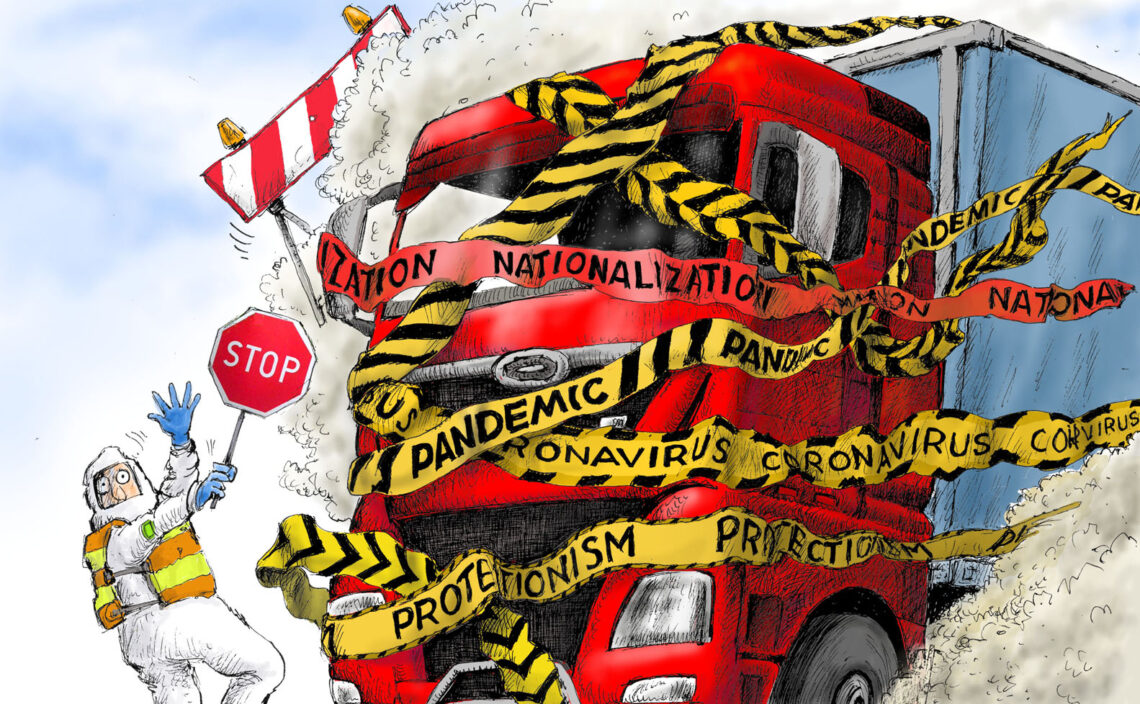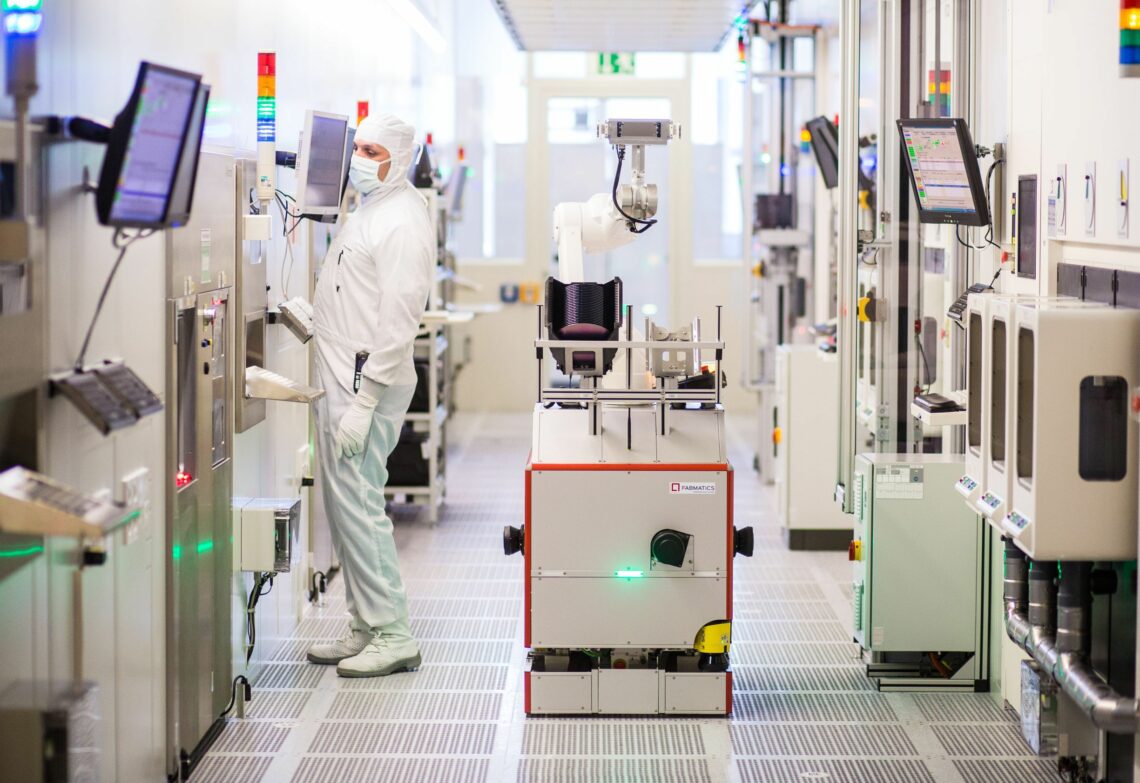Globalization is not going away
The Covid-19 crisis has not convinced companies that globalization is a bad move. In fact, firms have learned they need to broaden their supply chains and diversify their providers. Governments, however, will use the situation to push nationalization and subsidies.

In a nutshell
- The pandemic has forced firms to rethink supply strategies
- In most cases, it will convince them to diversify, not centralize
- Politicians will use scare tactics to support nationalization
This report is part of a GIS series on the consequences of the COVID-19 coronavirus crisis. It looks beyond the short-term impact of the pandemic, instead examining the strategic geopolitical and economic effects that will inevitably be felt further in the future.
The COVID-19 crisis has forced companies to think again about fragmenting and delocalizing production. The rationale for these moves is simple. It makes sense to unpack the various stages of production and rely on outsourcing when a business needs flexibility – when specific skills are required or when highly specialized suppliers are better at exploiting the economies of scale.
Moreover, it is advantageous to move processes to where factor prices are relatively low or, more frequently, when a company wants to be closer to its buyers and fears protectionist barriers or geopolitical tensions. Ironically, the greater the protectionist threat, the greater the need to globalize.
When firms go global to increase flexibility and reduce production costs, they diversify suppliers to avoid the cost of eventual disruptions. In their home regions, they concentrate the chain links that they cannot diversify and hope that future upheavals will not target final products.
Source of opportunity
Of course, nobody has perfect foresight. Producers make mistakes. For example, some suppliers turn out to be unreliable, some final markets could fail to expand, and while some goods or services look cheap their quality is unexpectedly low. Yet, catastrophic mistakes are usually avoided through trial and error. Globalization has proven stronger than protectionism and geopolitical tensions.
The pandemic did not hit all countries at the same time and to the same extent. As a result, global producers that failed to diversify their sources of supply were punished, while firms that focused on delocalizing digital services and artificial intelligence-intensive manufacturing found themselves rewarded.
The COVID-19 crisis has punished global producers that failed to diversify their sources of supply.
Contrary to the current narrative, the COVID-19 containment measures have penalized those who thought that going global just meant to make informed guesses about fast-growing markets, and those who fell behind in the technological race.
Although COVID-19 has emphasized that globalization is not a remedy for bad management and poor entrepreneurship, it has also shown that going global remains an extraordinary source of opportunity. Globalization presents a chance to exploit cutting-edge technology in locations with the most suitable conditions. It gives cautious entrepreneurs a way of diversifying, thereby reducing the cost of uncertainty. It allows daring economic actors to put a large share of their eggs into what they believe to be the most profitable basket.
Of course, those who have put most of their eggs in one basket and then lost them because COVID-19 containment measures have broken or weakened their supply chains should not blame globalization. It does not eliminate uncertainty, nor does it prevent adventurous entrepreneurs from making bad choices. Furthermore, globalization rewards good decision-making and punishes poor planning. This seems obvious, but many forget that this rule applies both in the good times as well as in the bad times.
Technology and location
What can we expect for the future? As free-market supporters know, unfavorable events are also an incentive to reconsider past choices, acknowledge mistakes and envisage new strategies. In this light, it may be useful to focus on two sets of variables.

With regard to fragmenting the production process, the key variable is technology. How big do you need to be to attain optimum efficiency, and how many fixed costs do you need to incur to achieve the ideal technique? Flexibility drops as fixed costs rise, while fixed costs may increase as technologies improve (more fixed capital is required). The first challenge is to ensure that a large investment in fixed capital does not necessarily increase the share of fixed costs. The answer will come from artificial intelligence, digitization and long-term, open strategies (precise guidelines within which frequent revisions are inevitable).
The second set of variables regards decisions about where to assemble final products. The closer a producer is to its buyers, the less it needs to worry about trade wars. Delocalizing to a large, protected market increases market power and keeps competition at bay.
The flip side of the coin is that most policymakers want to attract more than simple assembly lines. Eventually, they introduce rules that aim to increase “local content” – local added value. When this happens, foreign investors must shorten the supply chain and bear with inefficiencies.
Certainly, the pandemic has not changed much in this respect either: long, fragmented, vertical supply chains (most items come from outside suppliers and each item is provided by only one supplier) are ideal if everything goes according to plan. However, such systems can turn into a trap if something goes wrong – like a local disaster or the outbreak of an epidemic.
Scenarios
The virtues of free trade are not in doubt. Hardly anybody has argued that a catastrophe is a good reason to prevent people from buying what they prefer from the seller of their choice. Trade disputes will not disappear, and will continue to be waged under the same pretexts: to ensure national security or to please selected interest groups and support the ambitions of political leaders, perhaps with the excuse of forcing other countries to open up and be fair.
By contrast, the principle of free enterprise will come under severe attack. Governments will be tempted to take advantage of the emotional repercussions related to the pandemic and renew the rhetoric of national champions: the need to subsidize and possibly nationalize allegedly essential industries and types of production to contain the damage caused by weaker trade flows and dissolved supply chains.
In other words, the principle of free trade will be preserved, but its role will be weakened by scaring the public about the consequences of hypothetical disruptions.
Globalization, however, will not go into reverse gear. It will deepen, because large companies understand that size and centralization enhance research, assembly, marketing and finance, but can turn into liabilities when it comes to production. Supply chains will therefore broaden, as more and more large companies diversify their suppliers.
Incumbent suppliers will come under further competitive pressure, while those that had been left out of the major supply-chain networks in the past now have a new opportunity to catch the train.
Their chances will depend on the political and regulatory features of the countries where they are located. For example, companies in areas that have poor organization and resort to strict norms (such as lockdowns and closed borders) once an emergency occurs, will find it difficult to stay in the race, let alone compete for the best opportunities.
Foreign direct investment will also intensify, but its characteristics will change. Investors will find a greater appreciation for directing resources toward businesses operating within supply chains. The role of large production facilities close to the final buyer will not weaken. Nonetheless, the need to establish broad layers of standardized suppliers spread across different countries will probably encourage large companies to engage in closer cooperation with their counterparts, with a view to developing joint production plans and new technologies.
This might require large investments, and all partners will have to decide how to proceed – by starting new joint companies and conceiving new forms of governance and confidentiality clauses. It will not be easy: many companies will be left behind, and poor-quality governments could make things harder for otherwise well-managed businesses.
Other firms will flourish as competition intensifies. In the end, the quality of government will make the difference. We must be ready to accept that new inequalities may emerge, and old inequalities deepen.







